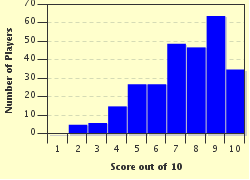Quiz Answer Key and Fun Facts
1. I use a single reed and am sometimes called a licorice stick. What instrument am I?
2. The concert master (or mistress) plays me, and there are usually around 30 of us in the (modern) orchestra. What instrument am I?
3. You can find me in the percussion section, and I have wooden bars with metal resonators beneath. What instrument am I?
4. I can come in both slide and valve variants, and my Renaissance predecessor was called the sackbut. What instrument am I?
5. As a grand piano, I am sometimes featured in the orchestra as a solo instrument. I fit into both the string AND percussion families.
6. I am played with a double reed and I am used to tune all the other instruments in the orchestra. What instrument am I?
7. My strings are so long and strong that I need machine heads to tighten them, and not just pegs like the rest of my family. What instrument am I?
8. I am a special kind of drum that can be tuned to different notes. There are usually at least four of us in the percussion section. What kind of drum am I?
9. I am a brass instrument that uses rotary valves, and to be played properly, my person sticks their hand in my bell. What kind of horn am I?
10. An orchestra can have one or two concert harps - we are big and tall and have lots and lots of strings. With the use of pedals to change string pitches, we are fully chromatic instruments, able to play in any key.
Source: Author
reedy
This quiz was reviewed by FunTrivia editor
kyleisalive before going online.
Any errors found in FunTrivia content are routinely corrected through our feedback system.

